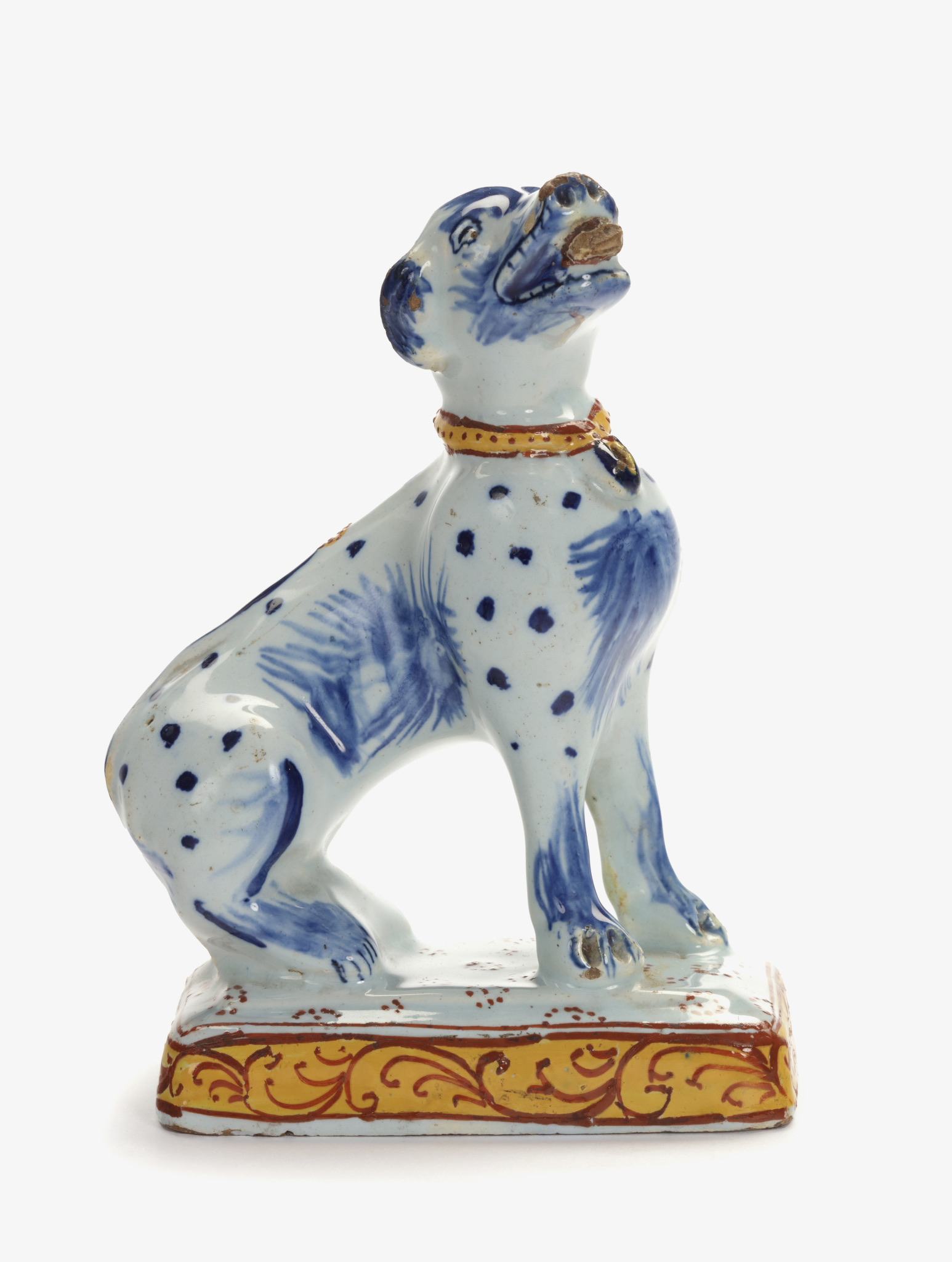![]()
Images on this website are licensed under a
Creative Commons Attribution-NoDerivs 3.0 Unported License.
OBJECT
•D2347. Polychrome Figure of a Seated Dog
Delft, circa 1750
Painted with a blue spotted hide, blue delineated facial features, paws and a blue tail, and an iron-red lapping tongue, wearing a red-dotted yellow collar affixed with a bell and seated on a base with encircled iron-red dot motifs, its yellow sides with iron-red scrollwork.
DIMENSIONS
Height: 13.7 cm. (5.4 in.)
PROVENANCE
Mak van Waay, February 18, 1974, lot 236;
Staal Antiquairs, Amsterdam, 1974 (according to family archive);
Dutch Private Collection, Amsterdam and hence by family descent
PROVENANCE+
The complete provenance of this entry has been registered by notarial deed with independent and secure registration agency Provenance+ Amsterdam.
NOTE
Dogs have been beloved human companions for thousands of years. In ancient Egypt, dogs were used for hunting, and they were domesticated over 10,000 years ago in the Far East. In the early modern period dogs assisted during the hunt, pulled carts, and were also kept as companions. Many contemporary paintings also show that several royal and noble families kept dogs as pets. For example, the pug, which is related to Far Eastern mastiffs, was introduced in Europe by the Dutch in the sixteenth century. Popularized by the House of Orange- Nassau, pugs quickly became the companion of kings and aristocracy. Therefore it is not surprising that the beloved animal also appears on Dutch Delftware.
Figures of dogs were produced in Delft from the eighteenth century. In fact, Holland was an agricultural region, a history that is often reflected in Delftware figures of farm and domestic animals. This example, made around 1750, shows a delicately painted blue and white figure of a seated dog. The loyal pet even wears a collar and bell. Purely ornamental objects, such as the present figure, were placed on the mantelpiece, etageres, or inside the ‘porcelain’ cabinet. A 1779 inventory made after the death of a former Delftware factory owner mentions figures of dogs found on the dining room mantelpiece, and several more figures in the kitchen along with the more typical Delft plates and dishes.
SIMILAR EXAMPLES
A similarly molded figure of a dog but with different decoration is in the Kunstmuseum, The Hague (inv. no. OC(D)6-1920. Another pair is illustrated in Lavino, p. 191.









